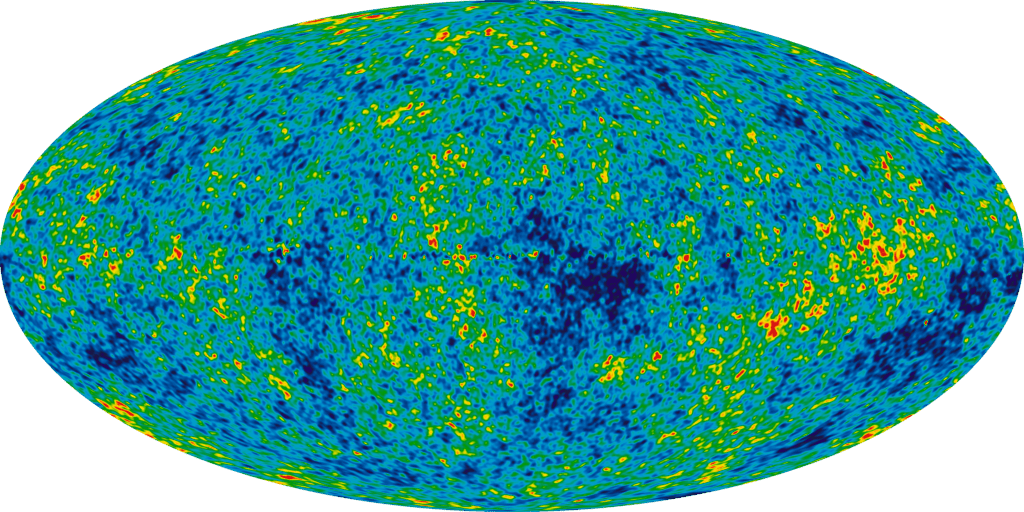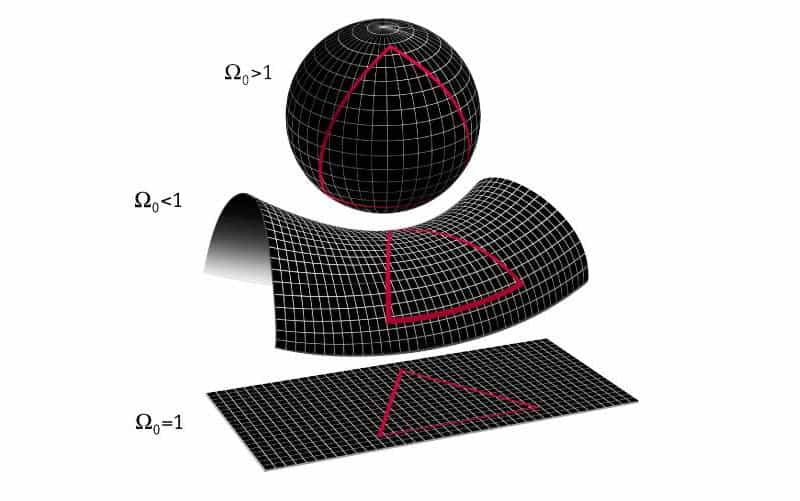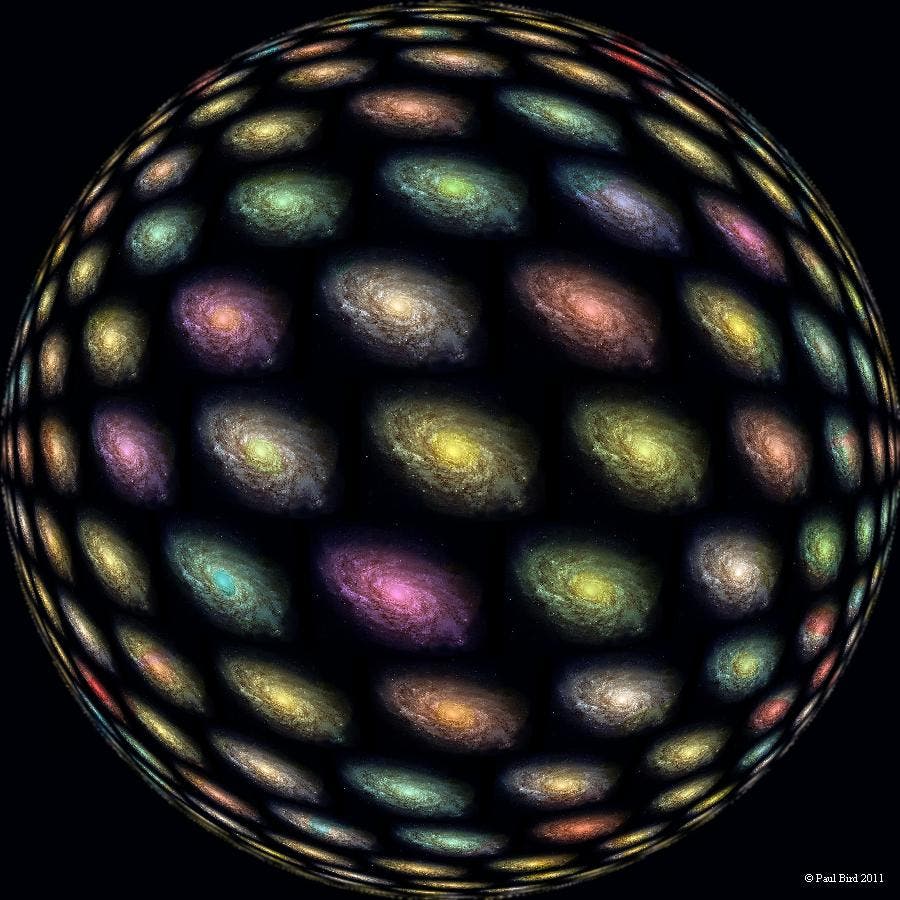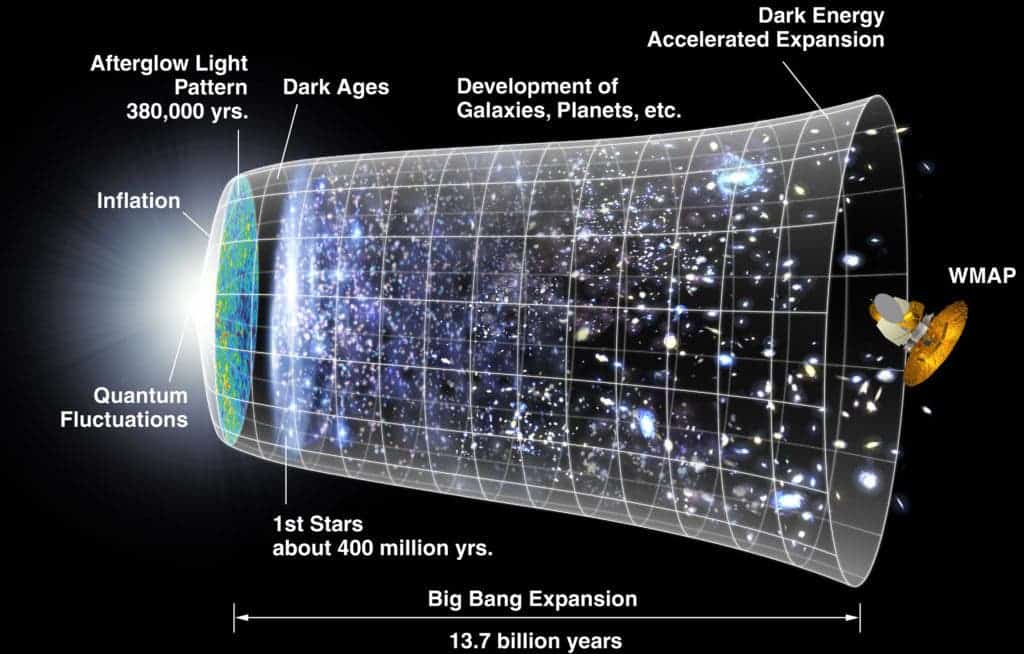The Universe is flat, according to modern research. But what does that mean?
Geometry, Topology, and the Big Bang

Thinking about the shape of the Universe is in itself a bit absurd. When you consider the shape of anything, you view it from outside – yet how could you view the universe from outside? When discussing this, astronomers generally approach two concepts:
- The local geometry. This concerns the geometry of the observable universe, along with its curvature.
- The global geometry. This concerns the topology, everything that is, as opposed to everything we can observe.
If we can observe the entire universe and we’re not limited somehow by its geometry or another characteristic, then the two coincide. But there’s a good chance that the two don’t coincide, and our observations are limited somehow by an intrinsic characteristic of the universe – we can’t really know, at least not now.
Most people would expect the universe in its entirety to be symmetrically round – a sphere-like shape, sort of like the Earth. Speaking of the Earth, let’s consider it for a while. We know the Earth is not flat, but what does that mean? Geometrically, it means that parallel lines on its surface aren’t really parallel. All lines, even if they do start parallel, would end up uniting at one of the Poles, and the distance between them will not be constant. As below:

So a flat Universe would mean that drawn parallel lines remain parallel – and herein lies the key. Broadly speaking and simplifying things, scientists noted that the light from several galaxies remains parallel to each other, across large distances of the universe. The Baryon Oscillation Spectroscopic Survey (BOSS) telescope gave some very strong evidence that the observable universe is indeed flat, and the implications are puzzling.
“One of the reasons we care is that a flat universe has implications for whether the universe is infinite,” said David Schlegel, a member of the Physics Division of the U.S. Department of Energy’s Lawrence Berkeley National Laboratory. “That means – while we can’t say with certainty that it will never come to an end – it’s likely the universe extends forever in space and will go on forever in time. Our results are consistent with an infinite universe.”
Here’s an excellent video which details why the Universe is probably flat:
Finite vs Infinite
Another debate about the universe which involves its shape is infinity. The universe is really big, we know that, but is it really infinite?
Since ancient times, humans have asked themselves that. In the 18th century, German astronomer Heinrich Wilhelm Olbers came up with a paradox: if the Universe is infinite, then the sky wouldn’t be dark. Why? Because in any direction you’d look, there would be infinite space and eventually, you’d encounter a star which would send its light. The night sky doesn’t completely light up so voila, the universe isn’t infinite. Unfortunately, it’s not as simple as that. There could be a number of explanations for Olber’s paradox, and none are simple. The universe is expanding rapidly, so distant stars are red-shifted into obscurity. Or light from other stars simply hasn’t reached us yet – again, we can’t really know. What we do know is that objects more than about 13.7 billion years old (the latest figure) are too far away for their light ever to reach us. So we pretty much know the age of the Universe, but what about its size?
You could say “Why don’t we just look in all directions and see how big it is?” but alas, once more – it’s not so simple.

The diameter of the observable Universe is 91 billion light-years. The distance the light from the edge of the observable universe has traveled is very close to the age of the Universe times the speed of light, 13.8 billion light-years, but this does not represent the distance at any given time because the edge of the observable universe and the Earth have since moved further apart. Because we cannot observe space beyond the edge of the observable universe, we can’t know directly whether the Universe is inifinite or not. Modern measurements, including those from the Cosmic Background Explorer (COBE), Wilkinson Microwave Anisotropy Probe (WMAP), and Planck maps of the CMB, suggest that the Universe is infinite in extent, but it’s still an ongoing debate.
But what about the Big Bang?

Most people have some kind of basic idea about what happened during the Big Bang, and this is where the most misconceptions lie. Because that’s when space came into existence, most people imagine it expanding in all directions equally – but that’s likely not how things went down. Before the Big Bang, there was no space or time. So, there is nothing “outside” the Big Bang in which the universe to expand to. The Universe simply expanded from a very small volume into a huge volume, and this expansion is occurring even today – but there’s no guarantee that the expansion took place symmetrically, in all directions.
So let’s get back to the local and global geometry. What our scientific observations are detecting is the local geometry, the observable universe (we can only observe the “observable” – hence the name). Our observations, as thorough and well thought as they may be, can’t be exhaustive.
The overall shape of the Universe
So, in the end, we’re left with a potentially flat, potentially infinite universe, but what is its global shape? Unfortunately, we don’t really know. Even if lines are parallel and the observable universe is flat, it doesn’t mean that the whole universe is flat. It could be a Möbius strip for all we know—a shape where space bends and distorts, but lines stay parallel, ultimately connecting one end of space to another.
At the end of the day, there are three distinct possibilities, all with their own distinct implications:
- Universe with zero curvature. A flat universe. Not necessarily infinite, and not necessarily looking like a sheet of paper. It could also have a shape like a torus.
- Universe with positive curvature. A sphere-like shape.
- Universe with negative curvature. You can think of it locally as a three-dimensional analog of an infinitely extended saddle shape.
We don’t know which one is true. What we do know is that the observable universe is flat – and that in itself is a remarkable finding.






